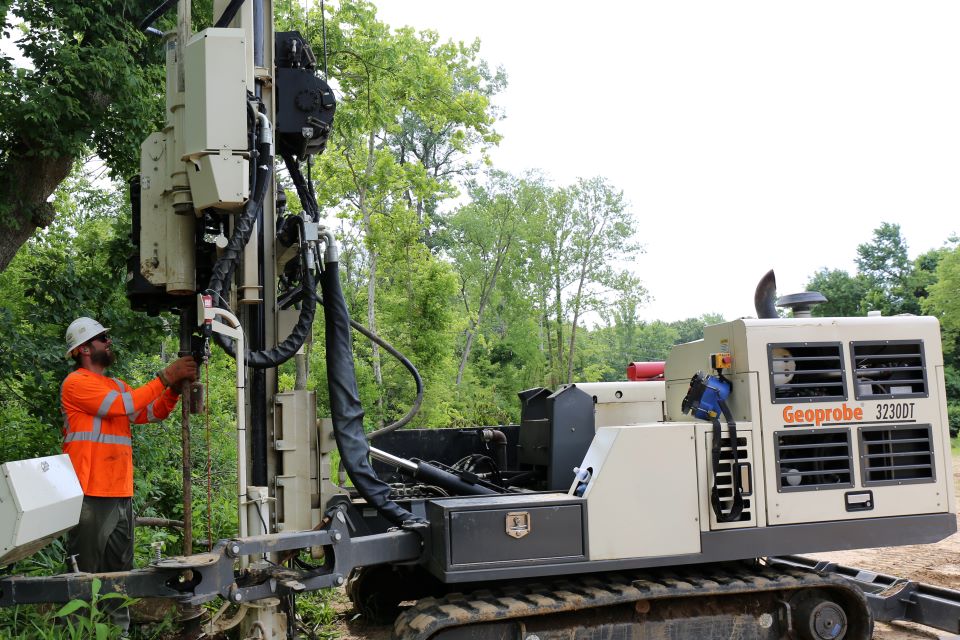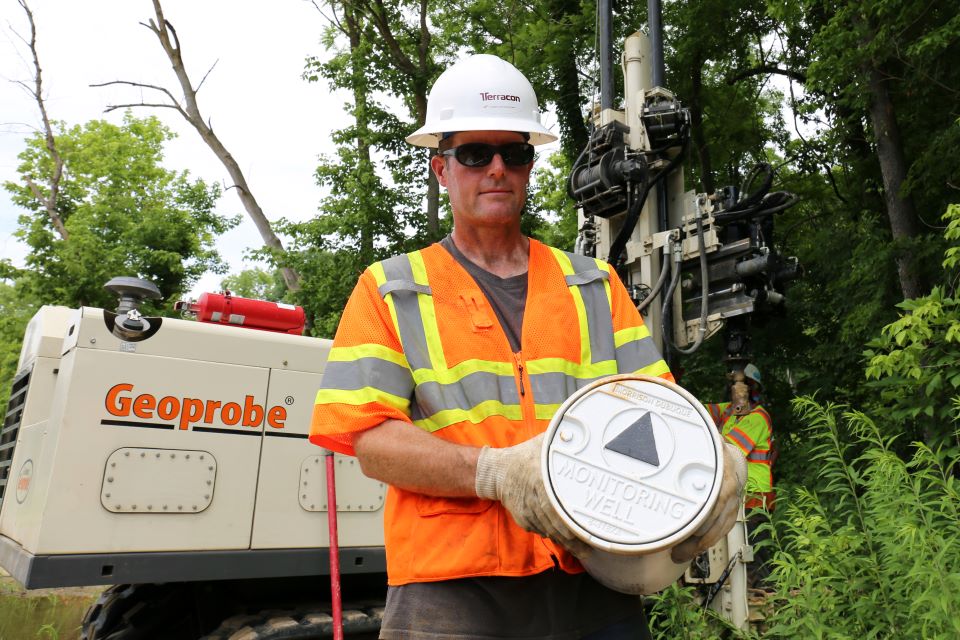Terracon Donates Groundwater Monitoring Wells to Support SLU WATER Institute Research
Bridjes O'Neil
Communications Specialist
bridjes.oneil@slu.edu
314-282-5007
Reserved for members of the media.
ST. LOUIS – The laborious task of understanding contamination in watersheds is now easier for researchers at the Saint Louis University Water Access, Technology, Environment and Resources (WATER) Institute. Terracon, a local consulting engineering firm, recently donated four groundwater monitoring wells to support research efforts.
“The wells are research instruments that would otherwise be prohibitively expensive to install, so it's an incredible gift from Terracon as well as our partners at the Missouri Botanical Garden for the use of the land,” said Rachel Rimmerman, director of business and outreach at the WATER Institute.
Looking for a way to partner with experts from his alma mater, Ben Luetkemeyer, Ph.D., senior geophysicist at Terracon, contacted the WATER Institute with the idea. Terracon, which specializes in environmental services like the Deer Creek Watershed Rehabilitation Project, recently installed the wells at an educational field site managed by the Missouri Botanical Garden.
James Faupel, ecological restoration supervisor at the Missouri Botanical Garden, says he looks forward to continued partnership with SLU, which began in 2015, and adds it’s an opportunity for long-term research that will benefit students for years to come.
The WATER Institute brings together researchers in engineering and science, policy and economics, and public health and social justice to help solve some of the world’s most complex water-related issues. The research conducted at the WATER Institute focuses primarily on three critical areas: developing clean-water access at home and around the world, protecting aquatic ecosystems and the water supply, and improving water infrastructure to address key societal needs, such as preventing and mitigating water-related natural disasters.
Elizabeth Hasenmueller, Ph.D., associate director of the WATER Institute and associate professor in SLU’s Department of Earth and Atmospheric Sciences, says her research focuses on the interactions of water, soil, and rock in natural and altered systems. Her interests include the origin and transport of contaminants in surface water and groundwater.
“In terms of impact on the region, we’re not only trying to understand how different poluttants move through watersheds but their impact on ecological and human health,” said Hasenmueller, who leads the Environmental Geochemistry Lab at SLU.
Graduate research lab assistants Carly Finegan and Natalie Hernandez were among those overseeing the installation of the groundwater monitoring wells. They are leading long-term monitoring projects at the educational field site to understand microplastic and wastewater contamination in watersheds.
Microplastics are created when plastic trash breaks down in water resources, leaving tiny pieces behind.
“They are pervasive in the environment. We honestly don’t know the human and ecological health implications yet,” Hasenmueller said. “We can see that they accumulate in organisms, and we know that they have been found in humans, including in our blood and lungs. We also know they can contain toxic additives and may accumulate contaminants such as lead on their surfaces. It’s important to know where they are in watersheds so we can further examine their implications for ecosystem health.”
Wastewater contains fecal bacteria and toxic metals, which can get into the environment. People and animals that come into contact with a contaminated water source can be exposed to harmful pathogens and chemicals which can make humans, animals, and other organisms sick.
“We hope our efforts will improve water quality in the area,” Finegan said.
The WATER Institute is conducting this research with the vision that the findings will ultimately inform mitigation strategies for more effective stewardship of the environment that can lead to healthier communities and ecosystems in our region and beyond. Furthermore, through outreach and engagement initiatives, the WATER Institute is working to partner with regional organizations to tackle water quality issues and provide educational resources to the broader community to engage with these topics and become stewards of water and the environment.
About the Saint Louis University Research Institute
The Saint Louis University Research Institute advances the University’s ambition to become a preeminent center for basic and applied research. Established in 2018 through a generous gift from Dr. Jeanne and Rex Sinquefield, the Institute provides critical funding to support outstanding researchers whose interests and areas of study span the University. The Institute strives to become a national and international model for promoting teaching, learning and research that exemplifies discovery, transformative outcomes and engaged citizenship in a global society. For more information, visit the institute.
About Saint Louis University
Founded in 1818, Saint Louis University is one of the nation’s oldest and most prestigious Catholic institutions. Rooted in Jesuit values and its pioneering history as the first university west of the Mississippi River, SLU offers more than 12,000 students a rigorous, transformative education of the whole person. At the core of the University’s diverse community of scholars is SLU’s service-focused mission, which challenges and prepares students to make the world a better, more just place. For more information, visit slu.edu.



















